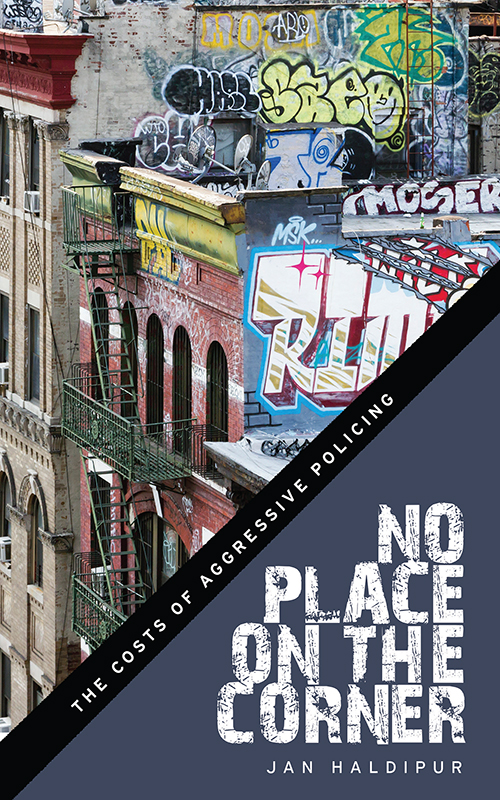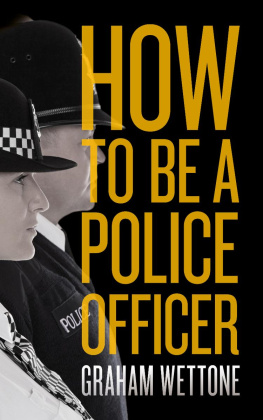
No Place on the Corner
No Place on the Corner
The Costs of Aggressive Policing
Jan Haldipur

NEW YORK UNIVERSITY PRESS
New York
NEW YORK UNIVERSITY PRESS
New York
www.nyupress.org
2019 by New York University
All rights reserved
References to Internet websites (URLs) were accurate at the time of writing. Neither the author nor New York University Press is responsible for URLs that may have expired or changed since the manuscript was prepared.
Library of Congress Cataloging-in-Publication Data
Names: Haldipur, Jan, author.
Title: No place on the corner : the costs of aggressive policing / Jan Haldipur.
Description: New York : New York University Press, [2019] | Includes bibliographical references and index.
Identifiers: LCCN | ISBN 9781479869084 (cl : alk. paper) | ISBN 9781479888009 (pb : alk. paper)
Subjects: LCSH: Police-community relationsNew York (State)New York. | Urban youthNew York (State)New YorkSocial conditions. | ImmigrantsNew York (State)New YorkSocial conditions. | Community developmentNew York (State)New York. | CitizenshipNew York (State)New York. | Crime preventionNew York (State)New York.
Classification: LCC HV8148.N5 H35 2018 | DDC 363.2/3097471dc23
LC record available at https://lccn.loc.gov/2018012213
New York University Press books are printed on acid-free paper, and their binding materials are chosen for strength and durability. We strive to use environmentally responsible suppliers and materials to the greatest extent possible in publishing our books.
Manufactured in the United States of America
10 9 8 7 6 5 4 3 2 1
Also available as an ebook
For Anneka, Simon, Damien, and Maddox
Contents
Figure I.1: The 40th, 42nd, and 44th Precincts of the New York Police Department
Figure I.2: 161st Street near the Bronx Hall of Justice
Figure I.3: 138th Street in the 40th Precinct
Figure I.4: New York City murders, 20022016
Figure I.5: NYPD stop and frisks, 20022016
Figure 1.1: Two boys play basketball using a makeshift hoop
Figure 3.1: A mother and her child attempt to beat the summer heat
Figure 4.1: A neighborhood corner store
Figure 4.2: A group of men play dominoes on the sidewalk
Window air-conditioner units and fire escapes dot the red and tan brick apartment buildings on College Avenue, a street located just a few blocks east of the Grand Concourse in the southwest Bronx. Thursday afternoons in this area are often a very tense time for neighborhood residents. On what have become known as Thirsty Thursdays, a weekly event in which officers from New York Citys 44th Police Precinct flood the neighborhood in the departments trademark blue and white vans, young people from the community can disappear for hours and sometimes days at a time.
Young adults, primarily men but also women, in this and other neighborhoods in the South Bronx are transported in this vehicle to the nearest police precinct and held there until a family member can pick them up. The explanation for whisking away these young people is typically vague or even nonexistentat best, sometimes nothing more than the comment that the youth was causing trouble or disturbing the peace. The crime prevention program under which these young people are rounded up and abruptly herded away is known as stop, question, and frisk, or, colloquially, stop and frisk.
In the early 2000s, New York City began to experience a surge in the use of this strategy, an aggressive police tactic that became a distinctive feature of the New York Police Department. Young black and Latino men disproportionately became the focus of this approach, which targets residents of selected neighborhoods throughout the five boroughs. Although the number of documented stops began to decline in 2012, aggressive policing has not disappeared and its impact continues to be felt by both the individual and the community.
This book draws from three years of intensive ethnographic fieldwork conducted before and after the landmark court decision Floyd, et al. v. City of New York, which was handed down by a federal judge in 2013 and ruled such stops unconstitutional. My research was conducted in and around the 40th, 42nd, and 44th Precincts in the western portion of the South Bronx, the latter of which was recently recognized by the New York Times as having one of the highest use(s) of force in the entire city.
Relying primarily on participant observation, informal interviews, focus groups, and life-history interviews, this book examines how local residents make sense of aggressive policing tactics and explores the strategies and sources of resilience these individuals use to cope. I take a close look at residents conception of what it means to be a citizen and how their right to public space has been transformed by aggressive policing tactics.
My findings suggest that this approach to policing has led to a substantial erosion of faith in local and state institutions. My research also shows that these aggressive policing tactics discourage the formation of social ties in the neighborhood, the very networks residents need to thrive and get ahead.
Aggressive policing, most visible through the departments highly publicized stop-and-frisk program, results in a number of negative consequences. Although high-profile cases of police misconduct often dominate the headlines, they are only a part of the story. Missed classes in school and missed shifts at work can put a strain on a young persons financial situation and are among the more visible collateral costs of this mode of policing. Less visible but also destructive is the severe emotional toll that results when members of the community are forced to make sense of the experience of growing up under surveillance.
With New York City widely hailed as a success story in its ability to reduce street crime and with other cities having begun to replicate the New York Police Department model, I believed it was essential to analyze the effects of aggressive policing strategies on communities in New York. Much of what we know about the impact of this form of policing comes from statisticians and policymakers, who are typically examining the issue from a distance. Using a more grounded ethnographic approach, I wanted to look more deeply at the unanticipated consequences of the use of this tactic to better understand how residents of the South Bronx, particularly young adults, make sense of policing in their community.
Much of the existing literature on policing and its impact on local communities focuses almost exclusively on justice-involved black and Latino individuals or, at the other extreme, recounts the stories of the communitys highest achievers. By contrast, my goal was to expand on these narratives to gain a greater understanding of the effects of aggressive policing on the everyday lives of a broad range of local residents.
Specifically, I explore how different groups maintain a sense of community in the face of a looming police presence. I examine the ways that local residents remain resilient, along with the coping mechanisms and strategies they use to deal with this situation. I also examine the effects of this form of policing on residents day-to-day livesfor example, how employment and education prospects may be affected. Perhaps most important, I examine residents conception of what it means to be a citizen in such an environment and how the right to public space has been transformed by aggressive policing tactics.
Next page





